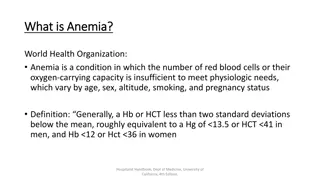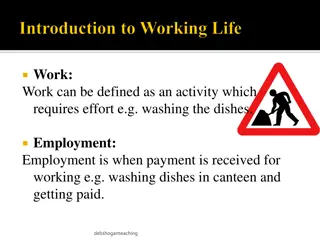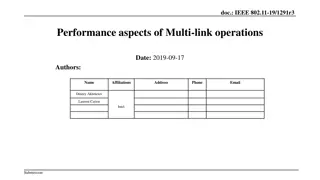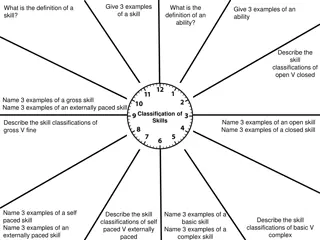Understanding Business Classifications and Work Types
Business organizations can be classified based on various criteria such as size, work type, industry sector, and legal structure. Size classifications range from small enterprises like sole traders to large corporations employing hundreds of people. Work types include primary sector activities like raw material extraction to secondary sector manufacturing processes. Explore the different categories to gain insights into the diverse landscape of businesses.
Download Presentation

Please find below an Image/Link to download the presentation.
The content on the website is provided AS IS for your information and personal use only. It may not be sold, licensed, or shared on other websites without obtaining consent from the author. Download presentation by click this link. If you encounter any issues during the download, it is possible that the publisher has removed the file from their server.
E N D
Presentation Transcript
Types of Business Lesson 5
BUSINESS CLASSIFICATIONS Business organisations can be classified in a number of different ways. The key classifications include: 1. Size: often in terms of the number of people the business employs. 2. Work Type: primary, secondary, tertiary, quaternary and quinary. 3. Industry Sector: mining, manufacturing, agricultural, construction, financial. 4. Legal Structure (Business Ownership): sole trader, partnership, company.
SIZE OF BUSINESS ENTERPRISES
Small Business Enterprises Usually sole trader and partnerships. Common in the following areas: farming, retailing and building, professions such as medicine, dentistry, law and accounting. Non-manufacturing firms such as retail outlets, which employ less than 20 employees. Manufacturing firms - less than 100 employees. Independently owned and managed. Small share of the market Financed by the owner. About 96% of businesses in Australia are small, and employ about half of the workforce.
Medium Business Enterprises Usually public companies. One with 20 to 200 employees. Mainly in personal services and manufacturing.
Large Business Enterprises Often public companies. One that employs more than 200 people. Found in the public sector, eg Telstra In the private sector - two largest private enterprise companies are Coles-Myer and BHP. Big Business that small number of companies that employ the other half of the workforce. Multinationals based here, but operating overseas. Transnationals internationally based and owned.
Primary Sector Provides the raw materials on which other economic activity depends Involves the exploitation of raw materials (coal mining, drilling for oil), the growth of food and textile crops, forestry, fishing and quarrying. Some of these resources are renewable, some are non-renewable Involves low value added industries - has an environmental consequence, particular during resource exhaustion
Secondary Sector Manufacturing - "Manufacturing has always been a necessary human activity ever since the first fashioning of a plough or spear from the branch of a tree" - Adam Smith. Adds more value by processing or both processing and combining raw materials. Capital or basic industries produce equipment for other industries. Assembly industries ('screw-driver industries') Consumer industries produce goods for direct sale to consumers.
Tertiary Sector Service sector: produces no physical 'product' Historically the largest single group has been servants and slaves - today includes fast food operatives and geriatric health care. Not necessarily highly paid - One of major examples is Tourism.
Quaternary Sector Originally Sub-set of tertiary sector - Reliance on high-skill labour. Includes wholesaling and advertising. Information production and management.
Quinary Sector Not widely used. Splits paid and unpaid domestic and accommodation labour from the Quaternary category. Initiated by Barry Jones ( Sleepers Wake! an Australian icon).
SUMMARY OF BUSINESS ENTERPRISES IN AUSTRALIA So a business enterprise is a single legal entity or unit operating to satisfy the wants of consumers. A business enterprise may be: A private enterprise owned by one or more people. More than 90% of business enterprises are privately owned. More than 95% of these are small businesses employing fewer than 20 people, eg sole traders, partnerships, companies and co-operatives.
A public enterprise owned and controlled by government appointees There are approximately 5 000 government owned business enterprises. Dominate three sectors: o public administration and defence o communication and electricity o gas and water. Provide community health, education and welfare services and transport and construction. Employ more than one-quarter of our working population..
A foreign owned enterprise. Produce half the output of mining industry and more than a third of manufacturing. A business operating in Australia is regarded as foreign-owned if 25% of its voting shares are controlled by overseas interests and no equal or larger single shareholdings are held by an Australian.
Question! Business Ownership: Private Sector - Which form of ownership is best? Refer to handout on ownership.























